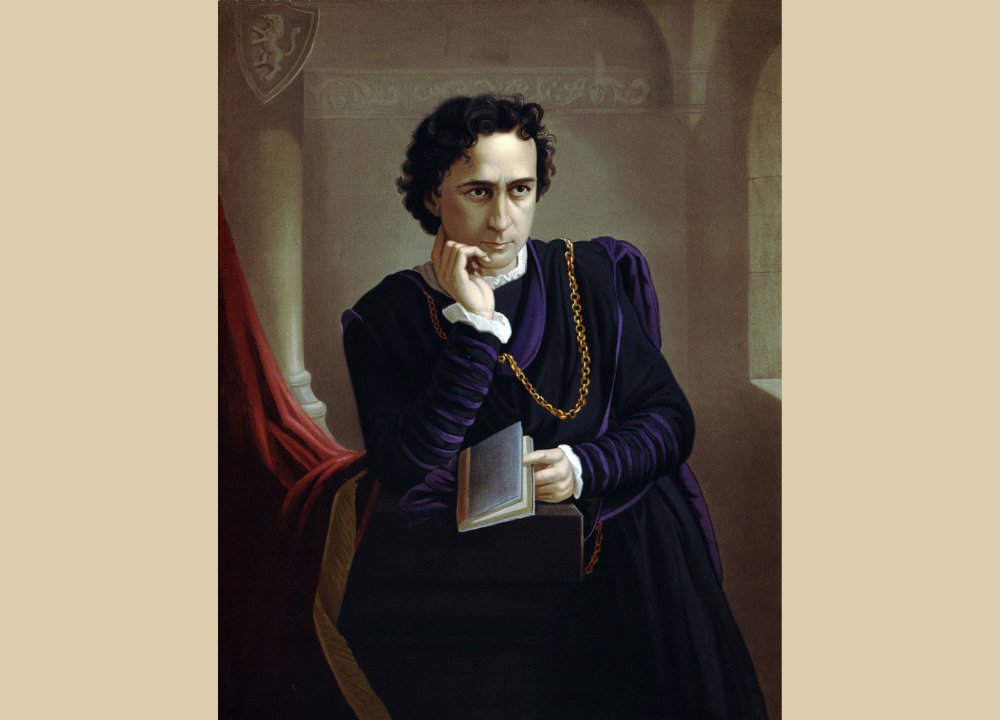“Hamlet” is often seen as Shakespeare’s greatest play. This powerful story explores deep themes of love, revenge, and madness.
Many people wonder why “Hamlet” stands out among Shakespeare’s works. The play has complex characters and a rich plot that draws readers in. It features the famous character of Prince Hamlet, who struggles with his own thoughts and feelings. The themes of betrayal, morality, and the search for truth resonate even today.
This blend of human emotion and philosophical questions makes “Hamlet” timeless. Understanding its impact can help us appreciate why it remains a favorite in literature and theater. Join us as we explore the reasons behind its lasting greatness.

Cultural Impact
Hamlet, one of Shakespeare’s most famous plays, has had a vast cultural impact since its creation. This play delves into themes of revenge, madness, and moral uncertainty. Its exploration of human emotions resonates deeply. The cultural impact of Hamlet can be seen in literature and theatre. The play influences writers and performers alike, shaping how stories are told. Understanding this impact helps us appreciate why Hamlet is considered Shakespeare’s greatest play.
Influence On Literature
Hamlet’s influence on literature is profound and widespread. Many writers have drawn inspiration from its complex characters and themes. The play introduced ideas that still appear in modern storytelling. Here are some key points about its literary influence:
- Complex Characters: Hamlet’s struggles reflect real human emotions.
- Themes of Existentialism: Questions of life and death are central to many modern works.
- Famous Quotes: Lines from the play are often referenced in other literary texts.
Several authors have acknowledged Hamlet’s impact on their own works:
| Author | Work Influenced | Connection to Hamlet |
|---|---|---|
| James Joyce | Ulysses | Exploration of identity and consciousness. |
| T.S. Eliot | The Waste Land | Themes of despair and disillusionment. |
| Tom Stoppard | Rosencrantz and Guildenstern Are Dead | Reinterpretation of Hamlet’s story. |
These examples show how Hamlet’s themes continue to shape literature. The play’s exploration of human nature remains relevant today.
Impact On Theatre
Hamlet’s impact on theatre is equally significant. It has transformed how plays are staged and performed. The complexity of Hamlet as a character allows for rich interpretations. Directors and actors find new ways to present the play. Here are some key aspects of its theatrical impact:
- Innovative Productions: Directors often experiment with staging and interpretation.
- Character Depth: Actors explore Hamlet’s psychology in various ways.
- Adaptations: The play has inspired films, operas, and ballets.
Many notable performances have highlighted Hamlet’s significance:
- David Tennant’s modern take in 2008.
- Sir Laurence Olivier’s classic performance in 1948.
- Kenneth Branagh’s full-text film version in 1996.
Each performance adds a new layer to the understanding of Hamlet. The play’s themes and characters continue to inspire and challenge actors and audiences alike.
Complex Characters
Shakespeare’s “Hamlet” stands out for its complex characters. Each character adds depth to the story. Their struggles and emotions resonate with audiences. This complexity invites deep analysis. It keeps readers engaged and intrigued. Understanding these characters helps to grasp the play’s themes and messages. They reflect human nature in various forms.
Hamlet’s Inner Conflict
Hamlet, the main character, faces intense inner conflict. He struggles with his feelings of betrayal and revenge. After his father’s ghost tells him about his murder, Hamlet feels torn. He wants to take revenge but fears the consequences. This conflict creates a powerful tension throughout the play. Some key points about Hamlet’s inner conflict include:
- His indecision about killing Claudius
- Feelings of guilt and anger
- His philosophical thoughts on life and death
- Desire for truth versus the fear of action
This inner turmoil is evident in Hamlet’s famous soliloquies. In one of his most famous lines, he asks, “To be, or not to be?” This question reflects his struggle with existence. Hamlet’s complexity makes him relatable. He embodies the human condition. His journey through doubt and despair is timeless.
Ophelia’s Tragedy
Ophelia’s character represents a tragic figure in “Hamlet.” She faces immense pressure from her father and brother. Her love for Hamlet complicates her situation. Ophelia is caught between loyalty to her family and her feelings for Hamlet. This conflict leads to her downfall. Key aspects of Ophelia’s tragedy include:
- Her struggle for independence
- Manipulation by her father, Polonius
- Her relationship with Hamlet
- Her descent into madness after her father’s death
Ophelia’s madness is poignant and heartbreaking. Her mental breakdown shows the effects of the surrounding chaos. In her famous scene, she hands out flowers, symbolizing lost innocence. This act highlights her tragic fate. Ophelia’s story resonates with themes of love, loss, and societal expectations. Her character adds a rich layer to the play’s exploration of tragedy.
Themes Of Revenge
Hamlet is often seen as Shakespeare’s greatest play, and one of the main reasons is its deep exploration of revenge. The theme of revenge drives the plot and shapes the characters. It raises questions about morality and justice. Hamlet’s quest for vengeance leads to a tragic chain of events. This theme resonates with audiences, making it timeless and relatable.
Moral Dilemmas
Hamlet’s struggle with revenge is filled with moral dilemmas. He faces tough choices that challenge his values. The need for revenge conflicts with his beliefs about right and wrong. This creates tension throughout the play.
- Should Hamlet kill Claudius to avenge his father’s death?
- Is it right to take a life for revenge?
- What happens to innocent people caught in the conflict?
Hamlet’s hesitation shows his inner conflict. He understands the gravity of murder. He fears the consequences of his actions. This struggle is evident when he says:
“To be, or not to be: that is the question.”
This famous quote reflects Hamlet’s deep thoughts about life and death. He questions existence itself. His moral struggles make him a complex character.
| Moral Dilemma | Hamlet’s Response |
|---|---|
| Revenge vs. Morality | Delay in action, contemplation |
| Justice for his father | Struggle with taking a life |
| Impact on others | Concern for Ophelia and Gertrude |
These dilemmas add depth to the story. They show Hamlet’s humanity. His moral questions create a powerful narrative that keeps audiences engaged.
Consequences Of Vengeance
The consequences of vengeance in Hamlet are severe and tragic. Hamlet seeks revenge against Claudius. This quest leads to chaos and destruction. The more he pursues vengeance, the more lives are affected.
- Ophelia’s madness and death
- Laertes’ thirst for revenge
- Hamlet’s own demise
Each act of revenge triggers a reaction. Hamlet’s actions lead to unintended consequences. For instance, Laertes seeks revenge for his father’s death. This results in a deadly duel.
This line marks the end of Hamlet’s journey. It emphasizes the emptiness that revenge brings. The cycle of vengeance ends in tragedy.
The play teaches important lessons about revenge:
- Revenge can consume a person.
- It leads to suffering for many.
- True justice is complicated.
Hamlet’s story serves as a cautionary tale. It shows how the desire for revenge can destroy lives. Shakespeare skillfully illustrates the dark side of vengeance in this timeless play.
Psychological Depth
Hamlet is often seen as Shakespeare’s greatest play. One reason for this is its deep psychological depth. This play dives into the human mind, exploring emotions and thoughts. It raises questions about life, death, and the nature of existence. Characters face their fears and doubts. This makes Hamlet not just a story, but a reflection of our own struggles.
Madness And Sanity
The themes of madness and sanity are central in Hamlet. The main character, Prince Hamlet, pretends to be mad. This act raises questions about what is real and what is not. Is he truly mad? Or is it a clever strategy?
- Hamlet’s madness challenges perceptions of reality.
- His behavior creates chaos in the royal court.
- It leads to tragic consequences for many characters.
Some key moments highlight this theme:
| Scene | Significance |
|---|---|
| Act 1, Scene 5 | Hamlet’s encounter with the ghost questions his sanity. |
| Act 2, Scene 2 | Hamlet’s feigned madness confuses other characters. |
| Act 3, Scene 1 | Hamlet’s soliloquy reveals his inner turmoil. |
Hamlet’s struggle with sanity reflects real human emotions. Many people can relate to feelings of confusion and despair. The tension between madness and sanity makes this play timeless.
Existential Questions
Existential questions play a big role in Hamlet. The play asks deep questions about life and death. What is the meaning of existence? Why do we suffer? These questions resonate with many people.
- Hamlet’s famous line, “To be or not to be,” summarizes his struggle.
- Characters face moral dilemmas that challenge their beliefs.
- The theme of revenge raises questions about justice and morality.
The characters’ choices lead to discussions about:
| Character | Existential Question |
|---|---|
| Hamlet | Is life worth living in a corrupt world? |
| Ophelia | What is the role of women in society? |
| Claudius | Can one escape the consequences of their actions? |
These questions encourage audiences to reflect on their own lives. They challenge us to think about our choices and beliefs. The depth of these themes is what makes Hamlet resonate even today.
Poetic Language
Hamlet is often called Shakespeare’s greatest play. One reason is its rich poetic language. The way Shakespeare uses words adds depth to the characters and themes. The beauty of his language makes the play memorable. This poetic style captures the audience’s emotions and thoughts. It invites readers to explore deeper meanings. Two key elements of this poetic language are soliloquies and imagery.
Soliloquies And Monologues
Soliloquies and monologues are vital in Hamlet. They reveal the inner thoughts of characters. These speeches let the audience understand their feelings and struggles. Hamlet’s famous “To be, or not to be” soliloquy explores life and death. It shows his deep conflict and uncertainty.
Key features of soliloquies and monologues:
- Intimate connection with the audience.
- Insight into character motivations.
- Reveals themes like madness and revenge.
Here is a table of significant soliloquies in Hamlet:
| Soliloquy | Character | Theme |
|---|---|---|
| To be, or not to be | Hamlet | Existentialism |
| O, what a rogue and peasant slave am I! | Hamlet | Self-loathing |
| Now I am alone | Hamlet | Isolation |
These speeches deepen our understanding of Hamlet’s character. They highlight his internal conflict and the play’s major themes.
Imagery And Symbolism
Imagery and symbolism enrich Hamlet’s language. Shakespeare uses vivid descriptions to create mental pictures. These images make the play more engaging. They help convey complex emotions and ideas.
For example, the image of a “rotten” Denmark symbolizes moral decay. This reflects the corruption in the royal court. Other powerful symbols include:
- The ghost of King Hamlet – Represents guilt and the past.
- The skull in the graveyard – Signifies death and mortality.
- The play within a play – Illustrates the theme of appearance versus reality.
Imagery also enhances emotional impact. It connects the audience with the characters’ experiences. Shakespeare’s choice of words evokes strong feelings. This poetic language makes Hamlet a timeless masterpiece.
Conclusion
Hamlet stands out as Shakespeare’s greatest play for many reasons. Its deep themes touch on life, death, and revenge. The complex characters make us think and feel. Hamlet’s struggles are relatable, even today. The famous soliloquies invite us to ponder our own choices.
This timeless story still resonates with audiences worldwide. Its impact on literature and culture is undeniable. Hamlet’s exploration of the human experience remains relevant. This enduring masterpiece continues to inspire and challenge readers and viewers alike. Shakespeare’s genius shines brightly in Hamlet.
Hamlet is widely considered Shakespeare’s greatest play due to its rich language, complex characters, and exploration of profound themes. The play’s enduring popularity also stems from its compelling revenge plot, psychological depth, and ability to resonate with audiences across centuries.




